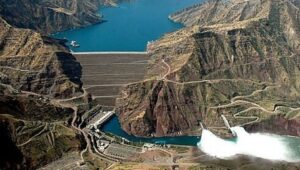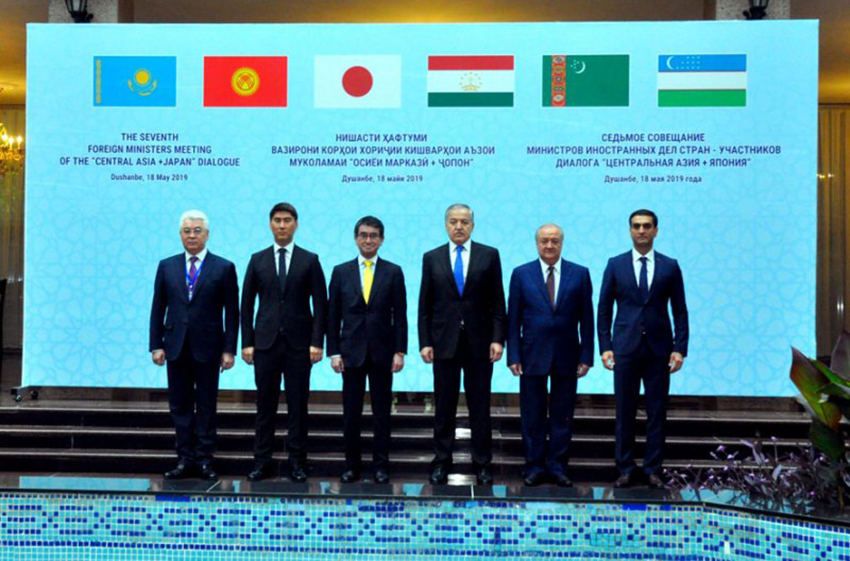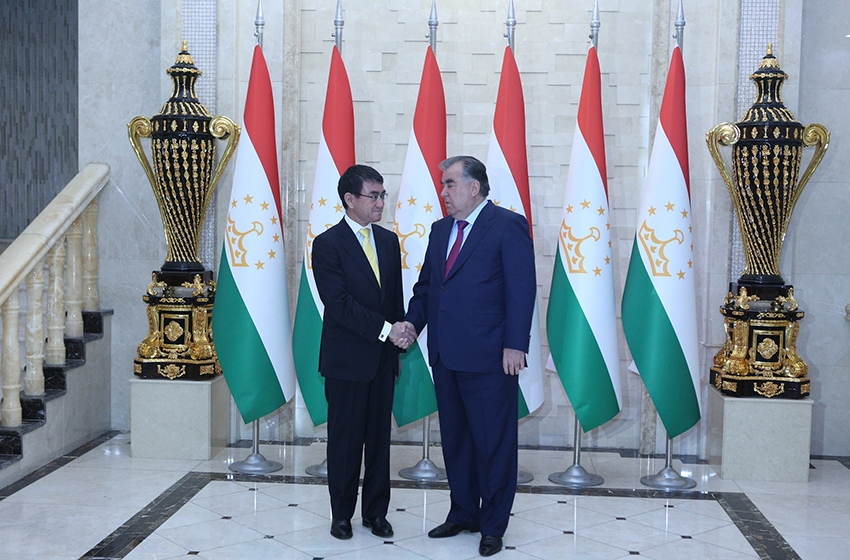- Annual electricity generation is 16.5 billion kWh (4-5% of the potential reserves)
- The design capacity of Rogun HPP is 3600 MW/13 billion kWh per year.
- Development of the energy sector –15.2% of the budget expenditures (2012)
- Excess of power in the summer is 3-5 billion kWh
- Electricity shortage in winter is 2.5 billion kWh
- Tariff for the population is 2.32 U.S. cents / 1 kWh.
- Tariff for the industry is 5.61 U.S. cents /1 kWh.
- Export of electricity in 2013 is about 1 billion kWh /34 million USD
- Coal reserves – 4.5 billion tons
- Coal production in 2013 is about 500,000 tons.
- Power system capacity is 5190 MW (4872 MW is the hydroelectric share or 94%; CHP is 318 MW or 6%)
- General potential reserves are 527 billion kWh per year (the eighth in the world), 4% of the worldwide hydropower potential.
HYDROPOWER

Tajikistan endowed with rich hydropower resources, hydro potential is estimated to be 527 billion kWh per year. In technical terms, the waterpower resources of Tajikistan have good prospects for development and consist of 317 billion kWh per year of which only 4-5% has been used so far. Tajikistan’s hydropower potential ranks No.8 after China, Russia, the USA, Brazil, Zaire, India and Canada. Tajik energy basis is hydropower – over 95 percent. Tajikistan’s hydropower potential is three times higher than the current electricity consumption throughout Central Asia. The effective use of these resources will allow the region to be provided with inexpensive and green power. The main hydropower potential is concentrated in the basins of the Vakhsh, the Pyanj, the Amu Darya, the Syr Darya and the Zarafshan.
Tajikistan’s power system is 5190 MW; the share of the hydro power plants accounts for 93.9% of the total installed capacity. The share of thermal power plants is 318 MW or about 6.1%. Annual electricity generation in the Tajik energy system, consisting mainly of hydropower plants, is 16.5 billion kWh.It should be noted that more than 98% of the electricity in Tajikistan is generated by hydropower plants, including 97% – by large and medium HPP.
In winter periods, the country experiences a significant deficit in electricity (2.2 – 2.5 billion kWh). For this reason, Tajikistan had to introduce limitations, which affect primarily rural residents comprising not less than 70% of the total population. Because of restrictions on power delivery in rural areas the annual loss of farm production is about 30%.
The power supply is most reliable during the summer period, as the surplus of energy is between 3 and 7.3 billion kWh. The surplus of water leads to idle discharge, which is seen as a huge potential loss of energy. Depending on annual hydrological conditions, the economic e economic loss averages between $90 and $225 million per annum.
Currently, there are 11 large and medium hydropower plants in the Republic of Tajikistan and nearly 300 small hydro power plants with total capacity of 132 MW. In 2009 we adopted the updated program for the construction of small hydropower plants. The program envisages the construction of 189 sHPPs with total capacity of 103.6 MW. More than 60 small hydropower plants with total capacity of 47 MW were built in 2010-2011and this trend continues. Preliminary estimates show that construction of more than 900 sHPPs with capacity of 100-3000 kW in the tributaries of the rivers in the mountainous regions of the country is technically and economically feasible. According to the experts’ estimate energy use of small rivers can meet the electricity demand of about 500-600 thousand people living in remote regions of the country by 50-70%, and in some cases – by 100%.
In 2011 the South-North power line that allows the country’s national grid to be independent went into operation. All this greatly increased the possibility of physical access to energy services of the entire Tajikistan population. Today the electricity tariff of 2.32 U.S.cents/1 kWh has a social orientation for the population in the Republic of Tajikistan. The state partially subsidizes the household electricity tariffs increasing the electricity tariff for all other consumers. The tariff for industrial consumers is 5.61 per 1 kWh, which is 2.4 times higher than the rate for the population. In addition, the Government subsidizes annual electricity consumption of low-income households from the republican budget.
With total revenues (10,160,600 thousand TJS) of the State Budget of the Republic of Tajikistan in 2012, 1.54 billion TJS or 15.2% of the total budget of the country was allocated for the development of the fuel and energy sector. Rising scale of expenditures for the fuel and energy sector has preserved in 2013 (1,712 billion TJS); more than 1.8 billion TJS has been planned for the sector in 2014.
COAL MINING

Besides hydropower resources Tajikistan has substantial coal with estimated reserves of 4.5 billion tons. By the end of 2013 the country’s mining operations produced about 500 tons of coal, which is twice as much as according to the plan.162 industrial enterprises in the republic have operated on solid fuel; the total annual demand exceeds 200 tons of coal.Active coal mining is implemented in coal fields of Tajikistan: “Shurob”, “Nazarailok”, “Fon-Yagnob”, “Zidi” and other coal fields. Their reserves are more than 100 million tons of coal.
The climate of Tajikistan is very favorable for the use of solar energy. On average there are 280-330 sunny days per year, and total solar radiation intensity varies during the year between 280 and 925 MJ/m2 in the foothills, and between 360 and 1120 MJ/m2 in the highlands. The use of available solar energy in Tajikistan can meet 10-20% of energy demand. The estimated potential of solar energy in Tajikistan is about 25 billion kWh / year. This potential is not used, if not to take into account some of its use for water heating.
There is small wind energy potential, but its use as complementary main hydropower is justified in some regions. There is small wind energy potential, but its use as complementary main hydropower justified in some regions. The strongest winds are observed in mountainous areas, where the landscape of the country finds the maximum wind speed and flows, as well as in the Sughd region and the Rasht Valley. Mean wind speed in these regions is about 5-6 m/sec.








